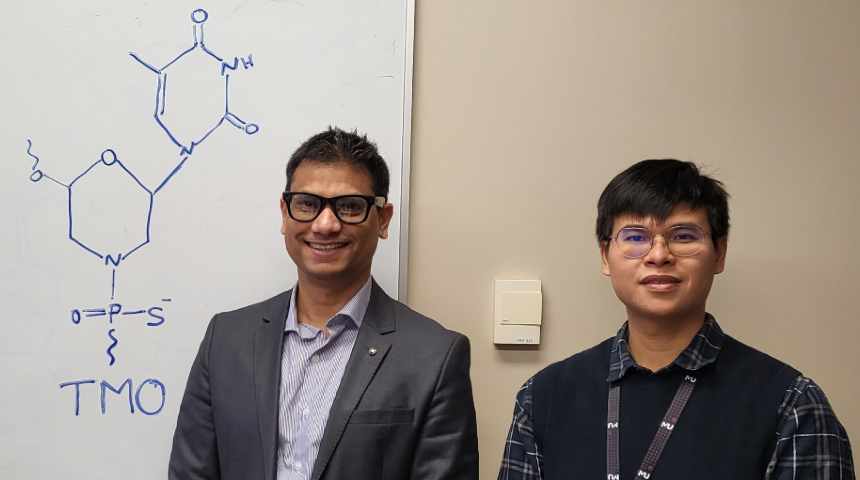
Murdoch scientists together with the University of Colorado have developed a new approach to precisely target the genes that cause rare and acquired diseases.
“RNA-based medicines offer significant promise for developing precision therapies to treat rare and acquired diseases,” says Associate Professor Rakesh Veedu, who led the research together with Professor Marvin Caruthers at the University of Colorado.
“This new research demonstrates the potential of a new class of chemistry for RNA therapeutic development applications.”
Ribonucleic acid (abbreviated RNA) is a carrier molecule of genetic messages that’s present in all living cells and is structurally similar to DNA. RNA helps turn genetic information into your body's proteins. The term has become better known in recent times through COVID-19 vaccines.
Pfizer and Moderna vaccines for COVID-19 are good examples of a Messenger RNA (mRNA) vaccine, which instructs cells in your body to make a protein that will trigger an immune response when it encounters the virus.
The newly developed chemistry, called thiomorpholinos (TMOs), is very effective in producing the RNA therapeutics that can target disease genes at low doses, compared with other chemistries.
“This new type of RNA therapeutic molecules can be manufactured in large amounts using conventional DNA or RNA manufacturing instruments at lower costs compared with the chemistry currently used in FDA aproved drugs, such as those used for the treatment of Duchenne Muscular Dystrophy,” explained Dr Veedu.
Based on the findings of this research, the newly developed TMOs chemistry platform offer great promise for future RNA therapeutic development.”This presents a big opportunity to address rare diseases, which disproportionately affect children, adolescents and young adults. They remain hard to diagnose, treat, and investigate, so the discovery of a more efficient platform for the development of rare disease therapies is both a health and economic boost.
Associate Professor Rakesh Veedu
In Western Australia, small case numbers present major burden on hospitals, with the 2% of people with a rare disease accounting for 10.5% of inpatient hospital costs. Dr Veedu says that TMOs can be used to develop efficient RNA targeting medicines to treat a range of diseases including rare genetic diseases, metabolic diseases, infectious diseases, and cancers.
The next step for Dr Veedu, postdoctoral scientist Dr Tri Bao Le and Professor Caruthers is to translate potential TMO drug molecules for clinical intervention.
“Developing innovative and efficient therapies and diagnosis can really make a big difference in the quality of life of patients, and this realization is what inspires me personally to continue this work.”
Dr Veedu is part of the Centre for Molecular Medicine and Innovative Therapeutics, a joint research centre between Murdoch University and the Perron Institute.
Read the paper in Proceedings of the National Academy of Sciences.
